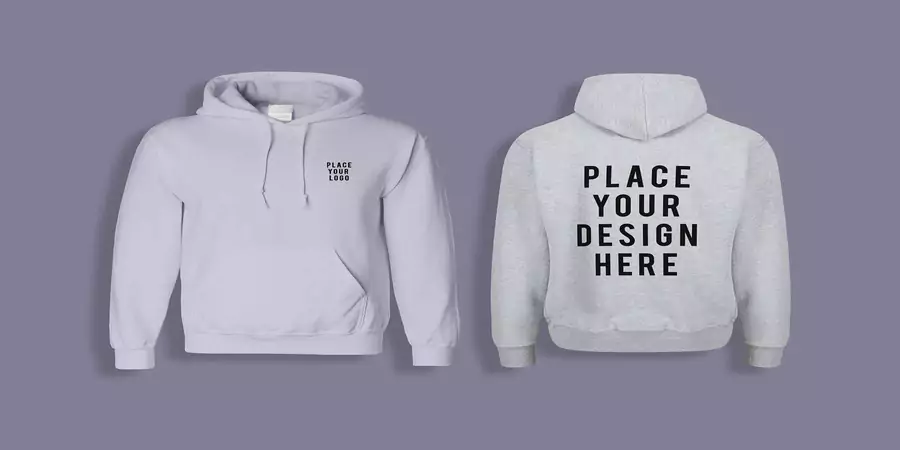Custom hoodie printing is an excellent way to create personalized apparel for businesses, events, or even casual wear. Whether you’re designing for a team, a brand, or just for fun, the material you choose plays a crucial role in determining the quality, comfort, and longevity of your product. Selecting the right fabric not only ensures the comfort of the wearer but also influences how well the design will hold up over time.
Choosing the best material for your custom hoodie requires considering factors such as print method compatibility, comfort, durability, and purpose. In this article, we will break down various fabric types, factors to keep in mind when selecting the right material, and how different materials impact the quality of your custom hoodie printing.
Understanding Hoodie Fabric Types
Before diving into the specifics of material selection, it’s essential to understand the most common types of fabrics used in custom hoodie printing. Each fabric has distinct qualities that can make it better suited to particular printing techniques and end uses.
Cotton is one of the most popular choices for custom hoodie printing. Known for its softness and breathability, cotton is an excellent fabric for comfort. However, cotton can sometimes shrink when washed, which may affect the fit of the hoodie over time. Despite this, cotton remains a top choice for customers seeking a natural feel and a comfortable garment.
Polyester, on the other hand, is a synthetic fabric known for its durability and vibrant print retention. It is less prone to shrinking and fading compared to cotton, making it a great option for hoodies that need to withstand frequent washing. Polyester’s smooth texture also makes it ideal for high-quality prints, especially when using methods like sublimation printing.
Cotton-Polyester Blends are another popular option. These fabrics combine the softness of cotton with the durability of polyester, resulting in a balanced material that provides comfort and longevity. Cotton-poly blends are ideal for those looking for a fabric that offers both softness and resistance to shrinking or fading.
Fleece and French Terry are typically used for hoodies designed for warmth. Fleece, with its soft texture and insulating properties, is a fantastic choice for winter or colder weather garments. French Terry, while similar to fleece, has a looped texture on the inside, offering a lighter, more breathable alternative. Both options are excellent for cozy, comfortable hoodies that provide warmth without feeling heavy.
Finally, Eco-Friendly Fabrics like organic cotton and recycled polyester are becoming increasingly popular as consumers grow more conscious of the environmental impact of their purchases. These fabrics offer a sustainable alternative to traditional materials while still providing the durability and comfort that custom hoodies require.
Factors to Consider When Choosing the Right Material
When selecting the fabric for your custom hoodie, there are several important factors to consider. Each of these aspects plays a role in determining the final product’s quality, comfort, and longevity.
Print Method Compatibility is crucial. The type of printing technique you plan to use will impact the fabric choice. For instance, if you’re using DTF station printing, which involves direct-to-film technology, polyester and cotton-poly blends work best, as these fabrics retain the vibrant colors and fine details that DTF printing offers. On the other hand, traditional screen printing may work better on cotton fabrics, as the ink adheres more easily.
Comfort and Fit are perhaps the most critical factors for many customers. A hoodie should feel soft and cozy, whether it’s worn casually or during more active moments. Fabrics like cotton and fleece are often preferred for their softness and warmth, making them ideal for relaxed, everyday wear. When deciding on a fabric, think about your target audience and what they’ll value most—whether it’s a soft, breathable option or something more durable and hard-wearing.
Durability and Longevity are other key considerations. Some fabrics, such as polyester, are more resistant to wear and tear, making them ideal for garments that will undergo frequent washing and wearing. On the other hand, cotton fabrics may need more careful handling to maintain their shape and print quality over time. When choosing a material, think about the intended use and how often the hoodie will be washed.
Color Retention is an essential aspect of fabric choice, especially if you’re looking to produce vibrant, long-lasting prints. Polyester is excellent at retaining color, ensuring that your custom design remains sharp and vivid even after several washes. Cotton, while great for comfort, may not retain color as well as polyester, meaning that prints could fade over time.
Purpose and Use should also guide your material selection. Are you designing hoodies for a sports team, a promotional event, or a casual fashion line? Different uses require different materials. For example, if you’re making hoodies for a winter event, fleece might be the best option due to its insulating properties. For a casual, everyday look, cotton or cotton-polyester blends might be more appropriate.
Popular Material Options for Custom Hoodie Printing
There are numerous fabric options to choose from, each with its benefits. Some of the most popular materials for custom hoodie printing include:
Organic Cotton is a great choice for those looking for an eco-friendly option. Organic cotton is grown without the use of harmful pesticides and chemicals, making it a sustainable choice for environmentally-conscious consumers. While it may not be as durable as polyester, it offers superior comfort and breathability, making it a popular option for casual wear.
Recycled Polyester is another eco-friendly material that provides the same durability and vibrant print retention as traditional polyester. Made from recycled plastic bottles, recycled polyester offers a sustainable alternative without compromising on quality.
Bamboo Fabric is an innovative alternative to traditional fabrics. It has a unique, soft feel and is naturally moisture-wicking and antibacterial, making it a great option for activewear. While bamboo fabric is relatively new to the market, it’s gaining popularity for its sustainability and performance characteristics.
Blended Fabrics, such as tri-blends (a mix of cotton, polyester, and rayon), are ideal for those seeking a vintage look. These fabrics offer a great balance of comfort, durability, and style, making them a popular choice for custom designs that aim for a retro vibe.
How to Test Fabric Quality for Custom Hoodie Printing
Once you’ve chosen your material, it’s essential to test it before going into production. Testing fabric quality can help you ensure that your print will adhere properly and that the hoodie will meet your expectations for comfort and durability.
Feel the Fabric first. Ensure that the fabric feels soft, smooth, and comfortable to the touch. This step is especially important if you’re producing hoodies for customers who will be wearing them for long periods.
Test Print Samples on the fabric to check how well the design adheres and how vibrant the colors appear. Not all fabrics respond the same way to different printing methods, so testing samples will give you a clear idea of how your design will look on the finished product.
Check for Shrinkage by washing a test sample. Some fabrics, especially cotton, may shrink after washing, so it’s important to check for this to avoid any surprises down the line.
Cost Considerations
The cost of custom hoodie printing can vary depending on the material chosen. Natural fabrics like organic cotton can be more expensive than synthetic options like polyester or cotton-poly blends. However, these costs are often worth it if you’re aiming for a premium product that aligns with your brand’s values. When ordering in bulk, consider how material costs will affect your overall production expenses.
Making the Right Material Choice for Your Brand
Ultimately, the material you choose for custom hoodie printing should align with your brand’s values and the needs of your target audience. Whether you’re prioritizing comfort, sustainability, durability, or vibrant prints, selecting the right fabric ensures that your custom hoodies will look great, feel comfortable, and last for years to come.
By considering the fabric’s compatibility with your chosen print method, the desired look and feel of the final product, and your brand’s values, you can make an informed decision that sets your custom hoodie apart from the rest.
In conclusion, when choosing the best materials for custom hoodie printing, it’s crucial to understand how fabric type influences the final product. By selecting the right material, considering factors such as print method compatibility, comfort, durability, and purpose, and conducting proper tests, you can create a high-quality hoodie that will delight your customers and stand the test of time.
















